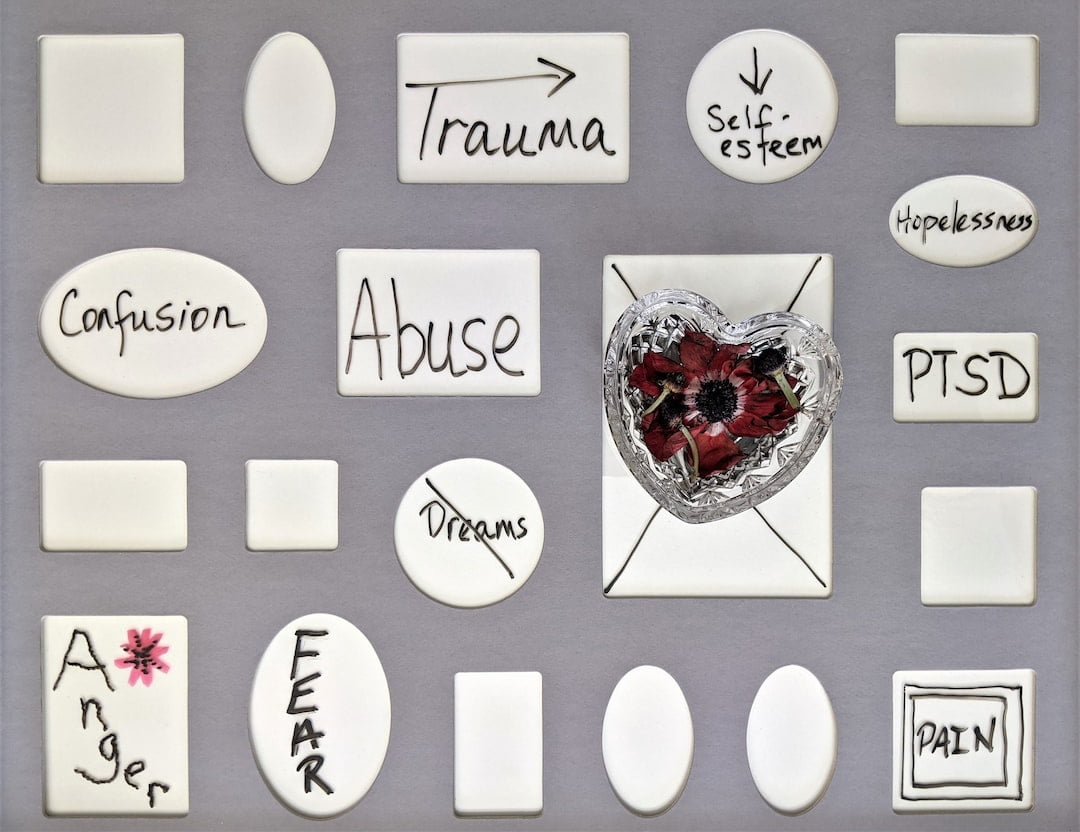
Unleashing the Power of Therapy Animals: How Mental Health Can Benefit from Furry Friends
Therapy animals have become increasingly popular in recent years as a form of treatment for mental health issues. These animals, typically dogs, cats, or horses, are trained to provide comfort and support to individuals struggling with emotional and psychological challenges. The presence of a therapy animal can have a profound impact on a person’s emotional well-being, providing a sense of calm and companionship that can be difficult to find elsewhere.
The benefits of therapy animals for mental health are numerous. Research has shown that interacting with animals can reduce stress levels, lower blood pressure, and increase feelings of happiness and well-being. Therapy animals can also help individuals develop social skills and improve their ability to connect with others. For those struggling with mental health issues such as anxiety or depression, the presence of a therapy animal can provide a much-needed source of comfort and support.
Key Takeaways
- Therapy animals can provide significant benefits for mental health, including reducing stress and anxiety.
- Emotional well-being is crucial for mental health, and therapy animals can help improve it through animal-assisted therapy.
- Animal-assisted therapy is backed by science and can be effective for treating a variety of mental health issues.
- Therapy animals come in many forms, from dogs to horses, and can be used to help both children and adults.
- Therapy animals can also be used in the workplace to improve employee mental health and productivity.
Understanding Mental Health: The Importance of Emotional Well-being
Mental health refers to a person’s emotional, psychological, and social well-being. It affects how we think, feel, and act, and it determines how we handle stress, relate to others, and make choices. Emotional well-being is an essential component of mental health and refers to the ability to cope with life’s challenges, build positive relationships, and experience a sense of fulfillment.
Unfortunately, mental health issues are incredibly prevalent in today’s society. According to the World Health Organization (WHO), one in four people will experience a mental health issue at some point in their lives. These issues can range from mild anxiety or depression to more severe conditions such as bipolar disorder or schizophrenia. Despite the prevalence of these issues, many individuals do not seek treatment due to stigma or lack of access to care.
How Therapy Animals Can Help: The Science Behind Animal-Assisted Therapy
Animal-assisted therapy (AAT) is a therapeutic intervention that involves interactions between individuals and trained animals to improve their physical, emotional, and social well-being. The science behind AAT lies in the physiological and psychological benefits of interacting with animals.
When a person interacts with a therapy animal, their body releases oxytocin, a hormone that promotes feelings of trust and bonding. Oxytocin also helps reduce stress levels and lowers blood pressure. Additionally, interacting with animals can increase the production of endorphins, which are natural painkillers and mood elevators.
Furthermore, animals provide a non-judgmental presence that can help individuals feel more comfortable expressing their emotions and thoughts. This can be particularly beneficial for those who struggle with social anxiety or have difficulty opening up to others. The unconditional love and acceptance that therapy animals provide can create a safe space for individuals to explore their emotions and work through their challenges.
The Different Types of Therapy Animals: From Dogs to Horses and Beyond
| Type of Therapy Animal | Description | Benefits |
|---|---|---|
| Dogs | Trained to provide comfort and support to individuals with physical, emotional, or mental health conditions. | Reduces stress and anxiety, lowers blood pressure, improves mood, and increases socialization. |
| Cats | Often used in nursing homes and hospitals to provide companionship and reduce loneliness. | Reduces stress and anxiety, lowers blood pressure, and provides comfort and companionship. |
| Horses | Used in equine-assisted therapy to help individuals with physical, emotional, or mental health conditions. | Improves balance, coordination, and muscle strength, reduces stress and anxiety, and increases self-esteem and confidence. |
| Birds | Often used in nursing homes and hospitals to provide companionship and reduce loneliness. | Reduces stress and anxiety, lowers blood pressure, and provides comfort and companionship. |
| Rabbits | Used in animal-assisted therapy to help individuals with physical, emotional, or mental health conditions. | Reduces stress and anxiety, lowers blood pressure, and provides comfort and companionship. |
Therapy animals come in various shapes and sizes, each with its unique benefits. Dogs are the most commonly used therapy animals due to their friendly and sociable nature. They are often trained to provide comfort and support to individuals with mental health issues such as anxiety or PTSD.
Cats are also popular therapy animals, known for their calming presence and ability to provide emotional support. Their gentle purring and soft fur can be incredibly soothing for individuals struggling with stress or depression.
Horses are another type of therapy animal commonly used in equine-assisted therapy (EAT). EAT involves interactions between individuals and horses to promote emotional growth and learning. Horses are highly intuitive animals that can mirror human emotions, making them excellent partners for therapy.
In recent years, more unconventional therapy animals have gained popularity. Llamas, for example, have been used in animal-assisted therapy programs to help individuals with autism improve their social skills. These unique animals provide a novel and engaging experience that can be highly beneficial for individuals with specific needs.
The Benefits of Animal-Assisted Therapy for Children with Mental Health Issues
Animal-assisted therapy has shown significant benefits for children with mental health issues. For children with anxiety, interacting with a therapy animal can help reduce stress levels and promote a sense of calm. The presence of a therapy animal can also provide a distraction from anxious thoughts and help children feel more at ease in social situations.
Children with attention deficit hyperactivity disorder (ADHD) can also benefit from animal-assisted therapy. Interacting with animals can help improve focus and attention span, as well as provide a positive outlet for excess energy. Additionally, the non-judgmental nature of therapy animals can help boost self-esteem and confidence in children with ADHD.
Numerous successful animal-assisted therapy programs for children have been implemented worldwide. For example, the Paws for Reading program allows children to read to therapy dogs, providing a non-judgmental audience and helping to improve reading skills. Similarly, equine-assisted therapy programs have been shown to be effective in helping children with autism develop social skills and improve communication.
Animal-Assisted Therapy for Adults: Reducing Stress and Anxiety

Animal-assisted therapy is not limited to children; it can also be highly beneficial for adults struggling with mental health issues. For adults with depression, interacting with a therapy animal can provide a source of joy and companionship, helping to alleviate feelings of loneliness and isolation. The unconditional love and acceptance that animals provide can also help individuals feel valued and appreciated.
For those with post-traumatic stress disorder (PTSD), animal-assisted therapy can be particularly helpful. Interacting with a therapy animal can help reduce anxiety levels and promote relaxation. The presence of an animal can also provide a sense of safety and security, allowing individuals with PTSD to feel more comfortable in their surroundings.
Several successful animal-assisted therapy programs for adults have been implemented. For example, the Warrior Canine Connection pairs veterans with service dogs, providing emotional support and companionship. This program has been shown to reduce symptoms of PTSD and improve overall well-being in veterans.
Therapy Animals in the Workplace: Improving Employee Mental Health and Productivity
The benefits of therapy animals extend beyond individual therapy sessions; they can also have a positive impact on employee mental health and productivity in the workplace. Many companies have implemented workplace animal-assisted therapy programs to help reduce stress levels and improve job satisfaction among employees.
Interacting with therapy animals during the workday can help employees relax and unwind, reducing stress levels and promoting a positive work environment. The presence of animals can also improve communication and teamwork among employees, as they provide a common topic of conversation and a shared experience.
Several successful workplace animal-assisted therapy programs have been implemented. For example, Google has a “Dog Policy” that allows employees to bring their dogs to work. This policy has been shown to reduce stress levels and increase employee morale. Similarly, the American Heart Association has implemented a “Puppy Therapy” program, where employees can interact with therapy dogs during their lunch breaks to help reduce stress and improve overall well-being.
The Role of Therapy Animals in Treating PTSD and Other Trauma-Related Disorders
Animal-assisted therapy has shown significant promise in treating post-traumatic stress disorder (PTSD) and other trauma-related disorders. The presence of a therapy animal can help individuals with PTSD feel safe and secure, allowing them to gradually confront their traumatic experiences in a controlled environment.
Animal-assisted therapy can also help individuals with PTSD manage their symptoms by reducing anxiety levels and promoting relaxation. Interacting with a therapy animal can provide a distraction from intrusive thoughts and nightmares, allowing individuals to focus on the present moment.
Several successful animal-assisted therapy programs for individuals with PTSD have been implemented. For example, the Canines for Veterans program pairs veterans with service dogs trained to provide emotional support and assistance with daily tasks. This program has been shown to reduce symptoms of PTSD and improve overall quality of life in veterans.
Overcoming Stigma: The Importance of Recognizing Animal-Assisted Therapy as a Valid Mental Health Treatment
Despite the numerous benefits of animal-assisted therapy, there is still a stigma surrounding this form of treatment. Many people view therapy animals as mere pets or believe that their benefits are purely anecdotal. However, research has consistently shown the effectiveness of animal-assisted therapy in improving mental health outcomes.
It is crucial to recognize animal-assisted therapy as a valid mental health treatment and educate the public and healthcare professionals about its benefits. By raising awareness and dispelling misconceptions, more individuals can access this form of treatment and experience its positive effects.
The Future of Therapy Animals in Mental Health Treatment
Therapy animals have proven to be a valuable asset in mental health treatment, providing comfort, support, and companionship to individuals struggling with emotional and psychological challenges. The benefits of therapy animals for mental health are numerous, ranging from reduced stress levels to improved social skills.
As the field of animal-assisted therapy continues to grow, there is potential for further development and expansion of these programs. With increased recognition and support, more individuals can access the benefits of therapy animals and experience improved emotional well-being.
In conclusion, therapy animals play a vital role in mental health treatment, providing a unique form of support that can be difficult to find elsewhere. Whether it’s a dog, cat, horse, or llama, these animals have the power to improve emotional well-being and enhance the lives of those struggling with mental health issues. As we continue to recognize the benefits of animal-assisted therapy, it is essential to advocate for its integration into mainstream mental health care and ensure that more individuals can access this valuable form of treatment.
FAQs
What are therapy animals?
Therapy animals are trained animals that provide comfort and support to people in need, such as those with mental health conditions, physical disabilities, or emotional distress.
What types of animals can be therapy animals?
Any animal can potentially be a therapy animal, but dogs and cats are the most common. Other animals such as horses, rabbits, and even llamas can also be trained as therapy animals.
How do therapy animals help with mental health?
Therapy animals can help reduce stress, anxiety, and depression by providing comfort, companionship, and a sense of calm. They can also help improve social skills and increase feelings of happiness and well-being.
What is the difference between therapy animals and service animals?
Therapy animals are trained to provide emotional support and comfort to people in need, while service animals are trained to perform specific tasks for people with disabilities, such as guiding the blind or alerting someone with hearing loss.
Do therapy animals need to be certified?
Therapy animals do not need to be certified, but they do need to be trained and well-behaved. Some organizations offer certification programs for therapy animals and their handlers.
Can therapy animals be brought into any setting?
Therapy animals can be brought into many settings, such as hospitals, nursing homes, schools, and airports. However, it is important to obtain permission from the facility or organization beforehand and follow any guidelines or regulations they may have in place.
Can anyone get a therapy animal?
Therapy animals are typically owned and handled by trained professionals or volunteers who work with organizations that provide therapy animal services. However, some individuals may be able to obtain a therapy animal for personal use with a doctor’s recommendation and proper training.


















